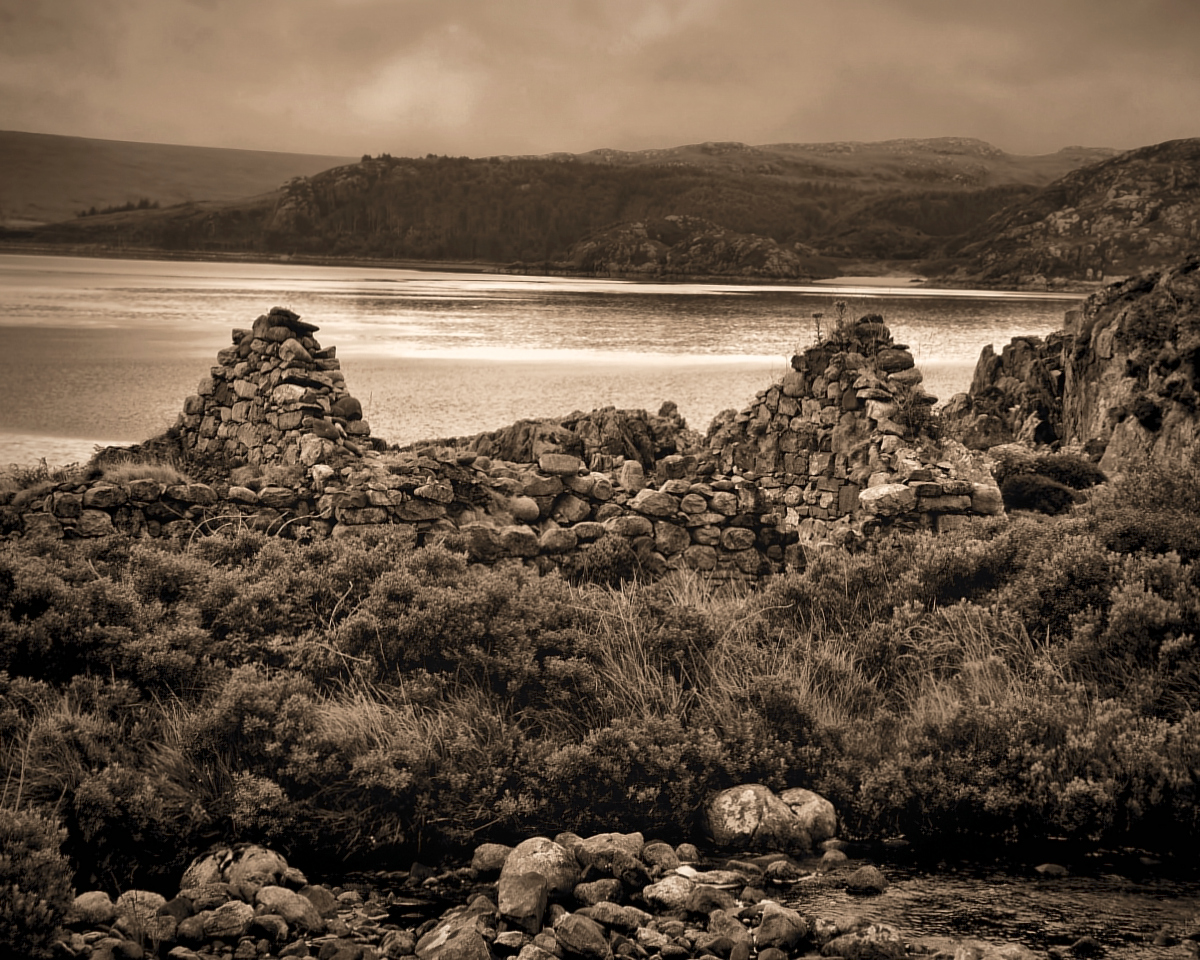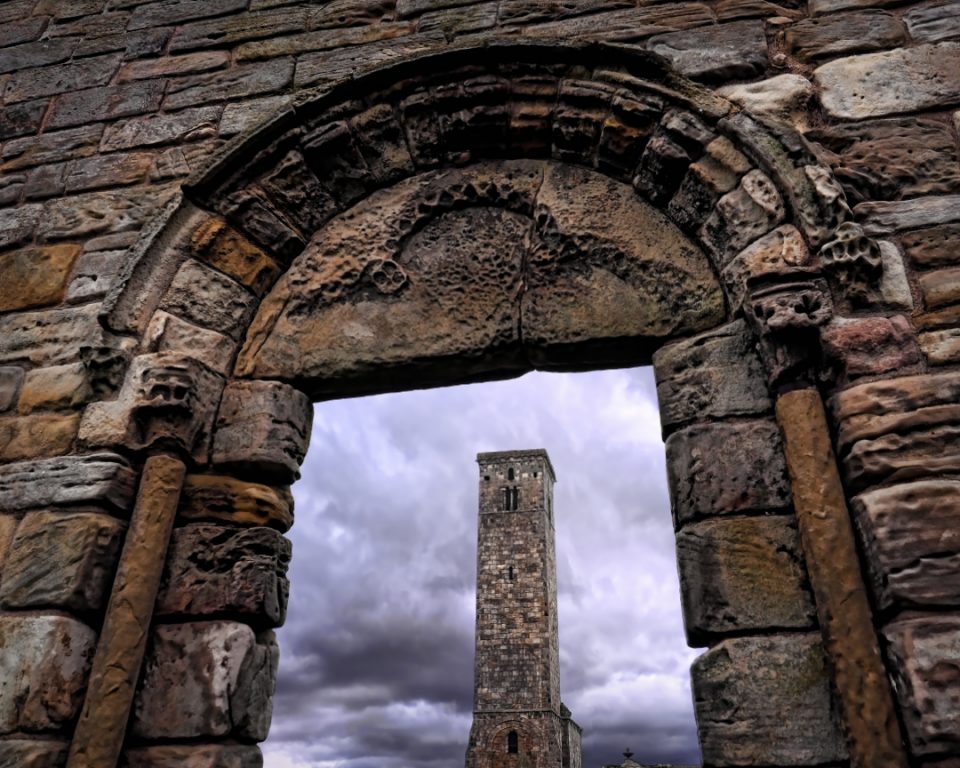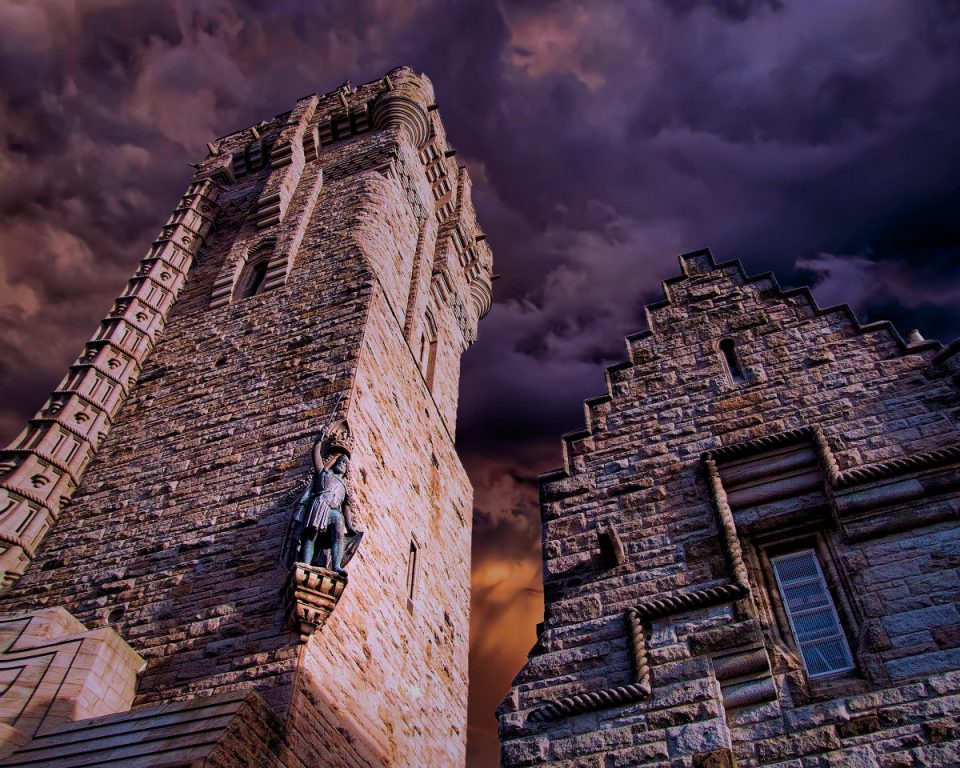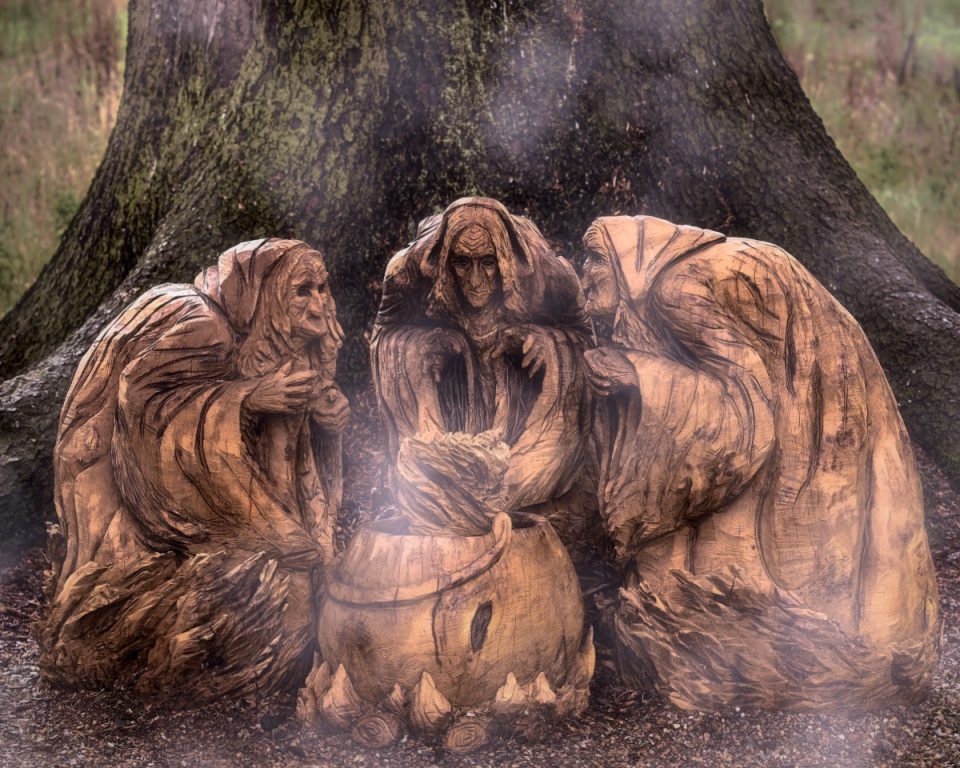Rubble is all that is left of the tiny settlement of Badanluig, once home to a proud people who pitted themselves against the land and sea and eeked out a meager survival in the Scottish Highlands. It is here they loved and raised their children. It was here that cruel landlords had them cast out of their homes and left destitute: child, widow and elderly alike. Their landlords called it land reforms, as they cast some of society’s most vulnerable to the wind and replaced them with sheep. It was done in the name of progress and enterprise. Sheep could make more money for their owners than their tenant cottars. The Highland Clearances must be one of the greatest travesties of justice ever seen in Scottish history.
Badanluig was a tiny settlement nestled in Gruinard Bay on the west coast of Scotland. It means ‘The Clump of the Hollow’ in Gaelic and shares its name with the burn which ran through it, powering the local meal mill. Its name would have been pronounced “bat uh looEk”. We know that there were at least eleven buildings in the township, perhaps as many as fourteen.
The First Clearance to Badanluig
For the poor inhabitants of Badanluig, it must have seemed that they were being hounded from pillar to post. Badanluig was a new township set up to house those who had been previously cleared. The Highland Clearances took their legal basis from an ancient Act of 1585 which permitted a laird to evict tenants provided he gave forty days notice, whereupon, he could bring in troops to evict them should his tenants fail to comply.
Of course, some lairds used questionable means, like Chisholm of Cromer who used the witch pricker, Christian Caddell, to try to implicate his McLean tenants as witches. The practice of witchcraft was a capital offense at the time. Until the 1745 Jacobite Rebellion, the Clan System was in place, with the clansmen being fiercely loyal to their clan chief. Suddenly, the Highland chieftains found their jurisdiction shortened and many were displaced from their lands. Laws were introduced to crush the Clan System. New policies saw the Clan System crash.
The MacKenzies of Gairloch, Gruinard and Letterer, traditionally had a good relationship with their tenants. However, by the end of the 18th century, several of the old MacKenzie estates were sold for financial reasons. These new landlords felt no responsibility or loyalty to their newly acquired tenants.
The Questionable John MacIntyre
In 1795, the Davidson family of Tulloch bought the Gruinard Estate. The Davidsons soon found a new tenant who would rent much of their estate. This was a man with a burning ambition and a dream. His name was John MacIntyre. MacIntyre aimed to create a huge sheep farm, extending from Kinlochleven to the sea at Gruinard. He began renting the most fertile lands of Glen Gruinard from the Davidsons and other local lairds between 1800 and 1803.
An estimated 30 to 40 families were living in Glen Gruinard before 1803 in places such as Glenarigolich and Dearg na Sealg. Soon they found themselves displaced, dispossessed of their homes to make way for sheep. They were sent to settle in the settlements at the coast: Little Gruinard, Badanluig, and First and Second Coast. Here the land was poor, a thin covering of soil over rocky outcrops. It is unlikely that any provision of food or shelter awaited the evicted families. No doubt they had to bed down in the heather, exposed to the elements and the clouds of midges which descend in the evenings until new structures could be built for their families.
These were hardy, resilient people used to dealing with a life of hardship. They began to build new lives for themselves in these settlement villages, scrapping a meager living from the land.
Then the landlord from hell arrived.
Meyrick Bankes The Landlord from Hell
Meyrick Bankes was a coal mine owner of Winstanley Hall, Wigan. In 1835 he bought the Gruinard Estate from the Davidsons of Tulloch in 1835, followed by the Letterewe Estate in 1837 from another branch of the Mackenzie family. Eventually, he owned some 69,800 acres in Ross-shire and had earned the reputation of being the worst landlord the area had ever seen.
The Second Clearance from Badanluig
In 1835, he began to clear the new settlements. Little Gruinard and Badanluig were cleared. Some of the crofters in Sand were relocated to First and Second Coast. He evicted the crofters from Drumchork. Then he took the hill grazings and sheilings from the people of Sand and First and Second Coast. The crofters were left with nowhere to put their non-milking cows and horses in the summer months. Some of the inhabitants had to send their horses as far north as Assynt, once the spring work had been completed, paying up to £1 per horse for summer grazing.
In 1841 there were still five households in Badanluig. By 1851 there were none- the occupants had been evicted. This was during the time of the potato famine of 1846-56 when blight decimated the crop, the mainstay of many Highland households, and severe famine ensued. Meyrick Bankes’ actions contrast greatly to that of some of the other local lairds. Taking responsibility for their tenants, the Lairds of Gairloch and Dundonell employed them in the construction of roads in return for food.
A Battle with Meyrick Bankes
There was no end to Mayrick Bankes’ greed. In 1860 served notice of eviction upon approximately ten of the smaller tenants in the Gruinard and Coast Area. This time the tenants chose to ignore the summons, ploughed the land and planted their seed. Bankes would have his revenge and so he waited. The crops grew and just before they were ready to be harvested, he sent in the land agents to evict them, knowing that an eviction would mean that with winter approaching they would be without shelter, food and fodder for their livestock.
But his tenants were not about to leave without a fight. One of the police hit an old woman with a baton. The crowd was incensed! A full-scale battle ensued. The police retreated to Dingwall in haste. A hundred men of the Ross-shire militia were mobilised, but the poor tenants were given a reprieve. It was illegal to evict tenants more than six weeks after Whit Sunday.
This was not the only land battle to be fought between tenants and Landlords in the Highlands. They were beginning to draw attention and public concern, particularly as they often involved women and the elderly.
Who was evicted from Badanluig?
Farquhar Matheson and his wife Catherine McKenzie were evicted from Badanluig in 1854. They were crofters of 4 acres of land. Farquhar was 53 years old, his wife 48 and their youngest girl Janet was just 8 years old at this time.
Christian or Christy McKenzie was the widow of Duncan MacAulay. She was 58 years old in 1848 when Bankes had her evicted. She was the mother of at least 5 children, her youngest was 13 years old at the time of their eviction.
Donald MacAulay and his wife Ann Matheson were evicted on the 24th March 1848. In December 18th, 1848, the Parochial Relief records show that the Court ruled that the MacAuays were entitled to Parochial relief and a house. Donald was said to be 70 years old, unable to work and with a wife of 65 years who was feeble. They were destitute, with no means of support and no dwelling house.
John McLeod and his wife Elizabeth were evicted on the 4th of April 1850. John was a salmon fisher and 44 years old at the time. They had a son John who would have been 11 years old.
The End of the road for Badanluig
A commission was set up to investigate the crofters’ rights. The Napier Commission recommended that there was a need for new legislation which would give the crofters the right of tenure. The first Crofting Act was passed in 1868- alas, everlastingly too late for the inhabitants of Badanluig.




